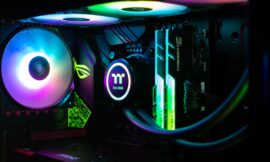Despite the fact that artificial intelligence has had a great impact today thanks to ChatGPT, the truth is that there are many companies that began to investigate this field in 2010 when many people thought that this was science fiction. This company is DeepMind, which is now going to have a great boost in its trajectory thanks to the agreement they have reached with Google, despite the fact that the company already bought it in 2014, although without merging teams (but working closely… with some internal conflicts).
Despite the fact that these two companies have had conflicts in recent years regarding cohesion in different projects, today we have witnessed the announcement of the union between DeepMind and Google Research’s ‘Brain Team’. These will form a single unit that is called Google DeepMind and that seeks to join forces to face the great challenges that exist in the field of artificial intelligence.
Google DeepMind, a department that wants to investigate AI
The person in charge of this new department will be the CEO of DeepMind himself, Demis Hassabis, who has stated that the main objective will be “solving the greatest challenges facing humanity”, in line with the Google product area. This could be an interesting move especially for Bard who got off to a bad start by trying to do things too quickly for Google to catch up with Microsoft and its Bing browser.
Google DeepMind wants to bring together the world’s existing AI talent with all the infrastructure and resources available to “create the next generation of AI advancements and products at Google and Alphabet.” And it is that something that Google has without a doubt are economic resources to be able to advance in the great challenges that this type of technology faces and the limitations that are currently found.
In the Google note, CEO Sundar Pichai wanted to go a little further, stating that the first project in which this team will be involved is multimodal AI models (and that they are also the most powerful). But he has not detailed the Google products where they will end up being applied, except for the reminder that this type of technology is found both on YouTube and in the Google Pixel camera itself.
This agreement is undoubtedly good news for users, since it will allow Google to continue to face large companies that have wanted to use AI in a different way. Now, we will have to wait for what advances will end up arriving in the coming months and how they work together even though they are already known from previous projects.


